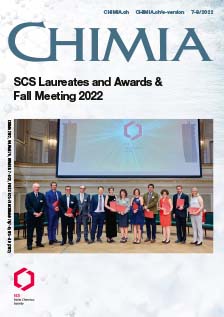Hybrid Microfluidic Device for High Throughput Isolation of Cells Using Aptamer Functionalized Diatom Frustules
DOI:
https://doi.org/10.2533/chimia.2022.661PMID:
38071633Keywords:
Circulating tumor cells, Diagnostics, Microfluidic platformAbstract
Circulating tumor cells (CTCs), secreted from primary and metastatic malignancies, hold a wealth of essential diagnostic and prognostic data for multiple cancers. Significantly, the information contained within these cells may hold the key to understanding cancer metastasis, both individually and fundamentally. Accordingly, developing ways to identify, isolate and interrogate CTCs plays an essential role in modern cancer research. Unfortunately, CTCs are typically present in the blood in vanishingly low titers and mixed with other blood components, making their isolation and analysis extremely challenging. Herein, we report the design, fabrication and optimization of a microfluidic device capable of automatically isolating CTCs from whole blood. This is achieved in two steps, via the passive viscoelastic separation of CTCs and white blood cells (WBCs) from red blood cells (RBCs), and subsequent active magnetophoretic separation of CTCs from WBCs. We detail the specific geometries required to balance the elastic and inertial forces required for successful passive separation of RBCs, and the use of computational fluid dynamics (CFD) to optimize active magnetophoretic separation. We subsequently describe the use of magnetic biosilica frustules, extracted from Chaetoceros sp. diatoms, to fluorescently tag CTCs and facilitate magnetic isolation. Finally, we use our microfluidic platform to separate HepG2-derived CTCs from whole blood, demonstrating exceptional CTC recovery (94.6%) and purity (89.7%)
Funding data
-
HORIZON EUROPE Framework Programme
Grant numbers 840232
Downloads
Published
Issue
Section
License
Copyright (c) 2022 Rashin Mohammadi, Mohammad Asghari, Monika Colombo, Zahra Vaezi , Daniel Richards, Stavros Stavrakis, Hossein Naderi-Manesh, Andrew deMello

This work is licensed under a Creative Commons Attribution 4.0 International License.







